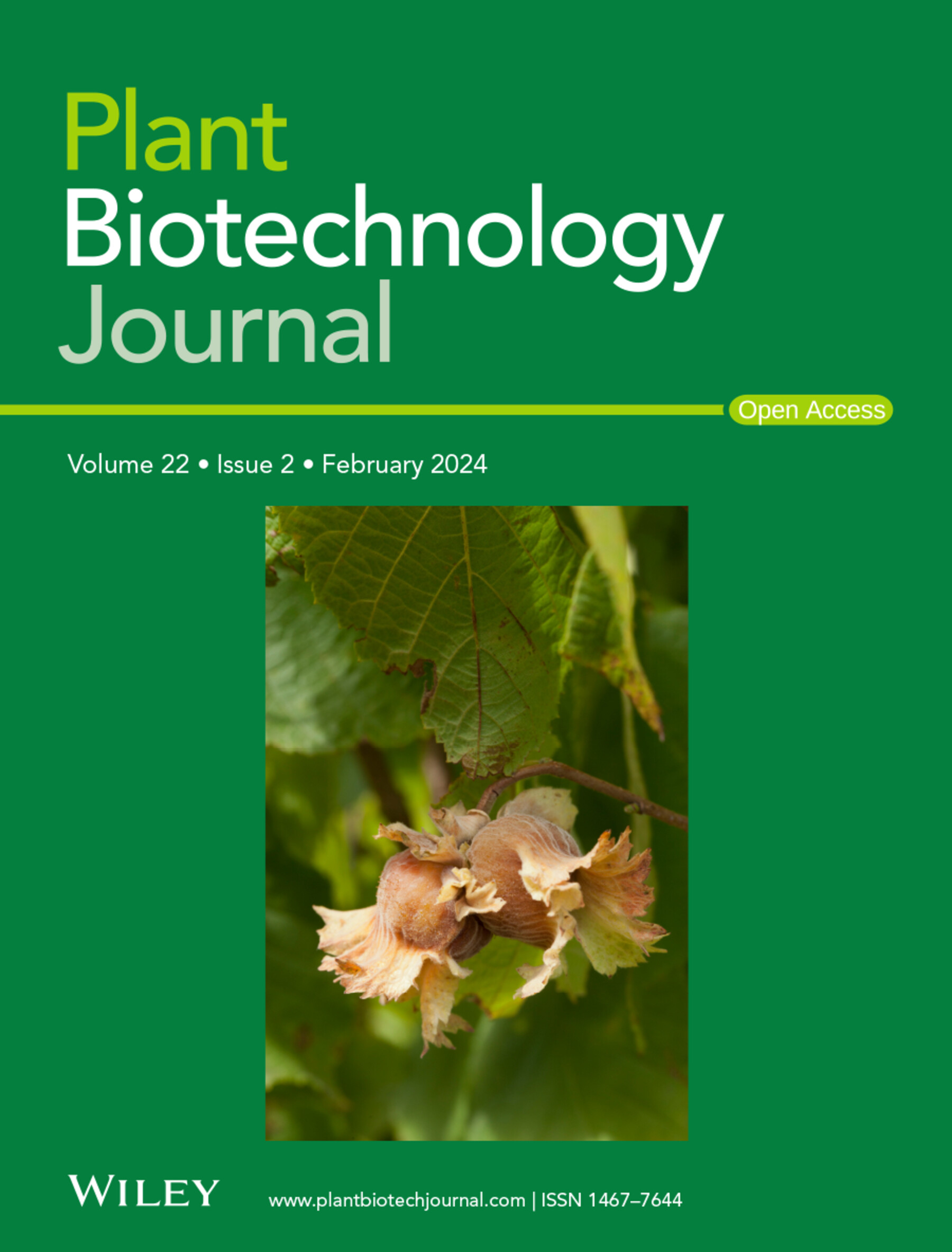Lysine deacetylase TaSRT1 mediates wheat drought tolerance by deacetylating TaDT-A to reduce its protein stability and transcriptional activity
IF 10.1
1区 生物学
Q1 BIOTECHNOLOGY & APPLIED MICROBIOLOGY
引用次数: 0
Abstract
Drought is one of the major environmental stresses limiting crop growth and yield. Epigenetic regulations play crucial roles in plant adaptation to environmental changes, whereas the epigenetic mechanism of drought resistance in crops remains largely elusive. Here, we report that the nicotinamide adenine dinucleotide (NAD+)-dependent deacetylase TaSRT1 negatively regulates drought tolerance in wheat. Compared with the wild type, the tasrt1 mutant had higher relative water contents, along with a smaller stomatal aperture and improved water use efficiency under drought conditions, whereas TaSRT1 overexpression plants exhibited opposite phenotypes. TaSRT1 directly interacted with the drought-resistant pivotal factor TaDT-A to regulate its protein stability and transcriptional activity through lysine deacetylation. Furthermore, the key lysine residue of TaDT-A was identified as a deacetylation/acetylation site that plays an important role in regulating its stability. In addition, genetic analysis indicated TaDT-A functions downstream of TaSRT1 to modulate drought resistance. These findings uncover how the functional interplay between epigenetic regulator and transcription factors regulates drought resistance in plants, and illustrate a mechanism by which lysine deacetylase affects gene transcription via influencing non-histone protein acetylation and regulating their function.求助全文
约1分钟内获得全文
求助全文
来源期刊

Plant Biotechnology Journal
生物-生物工程与应用微生物
CiteScore
20.50
自引率
2.90%
发文量
201
审稿时长
1 months
期刊介绍:
Plant Biotechnology Journal aspires to publish original research and insightful reviews of high impact, authored by prominent researchers in applied plant science. The journal places a special emphasis on molecular plant sciences and their practical applications through plant biotechnology. Our goal is to establish a platform for showcasing significant advances in the field, encompassing curiosity-driven studies with potential applications, strategic research in plant biotechnology, scientific analysis of crucial issues for the beneficial utilization of plant sciences, and assessments of the performance of plant biotechnology products in practical applications.
 求助内容:
求助内容: 应助结果提醒方式:
应助结果提醒方式:


